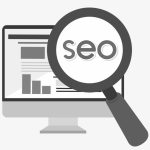If you have a website or online presence, you likely already know how important search engine optimization (SEO) is for driving traffic and growing your business. However, with so many strategies and tactics available, it can be overwhelming to know where to start. We’ll cover the basics of SEO and provide you SEO Guide to help you rank #1 on Google.
What is SEO? Best SEO Guide to Follow:
SEO is the process of optimizing your website to improve its visibility and ranking in search engine results pages (SERPs). Search engines use complex algorithms to determine which pages are the most relevant and valuable for a particular search query. By optimizing your website, you can increase your chances of appearing at the top of the results for your target keywords.
Keyword Research
Before you start optimizing your website, you need to know which keywords to target. Keyword research is the process of identifying the terms and phrases that people use to search for your products or services. You can use a variety of tools to conduct keyword research, including Google Keyword Planner, Ahrefs, and SEMrush.
On-Page Optimization
On-page optimization refers to the changes you can make directly to your website to improve its relevance and value to search engines. Some of the key on-page factors to consider include:
Title tags
Your title tags should include your target keyword and be less than 60 characters to ensure they appear correctly in SERPs.
Meta descriptions
Your meta descriptions should provide a concise summary of your page’s content and include your target keyword.
Header tags
Use header tags (H1, H2, H3) to structure your content and include your target keyword in at least one header.
Content
Your content should be high-quality, relevant, and provide value to your audience. Use your target keyword throughout your content, but avoid keyword stuffing.
Internal linking
Link to other relevant pages on your website to help search engines understand your site’s structure and hierarchy.
Off-Page Optimization
Off-page optimization refers to the factors that influence your website’s ranking that are not directly on your site. Some of the key off-page factors to consider include:
Backlinks
Backlinks are links from other websites to your site. The more high-quality, relevant backlinks you have, the higher your site is likely to rank.
Social signals
Social signals refer to the level of engagement and shares your content receives on social media platforms.
Brand mentions
Brand mentions occur when your business is mentioned online, even if there is no link back to your site.
Technical Optimization
Technical optimization refers to the changes you can make to your website’s code and structure to improve its performance and search engine compatibility. Some of the key technical factors to consider include:
Mobile-friendliness
Your website should be optimized for mobile devices, as more than half of all web traffic now comes from mobile devices.
Site speed
Your website should load quickly to ensure a positive user experience and avoid penalties from search engines.
Site architecture
Your website’s structure and hierarchy should be logical and easy for both users and search engines to navigate.
Schema markup
Schema markup is a code that helps search engines understand the content and structure of your site.
Conclusion:
SEO can be a complex and ever-changing field, but by focusing on the basics and implementing best practices, you can improve your website’s visibility and ranking in search engines. Remember to conduct keyword research, optimize your on-page and off-page factors, and ensure your site is technically sound. By following this SEO Guide, you can rank #1 on Google and drive more traffic and leads to your business. Also read 10 Essential SEO Tips to Dominate Your Online Competition

